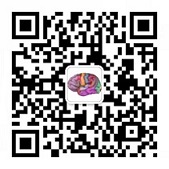Sleep-related Hypermotor (hyperkinetic) Epilepsy
It has also been called autosomal dominant nocturnal frontal lobe epilepsy.
Etiologies: autosomal dominant diseases can be incomplete penetrance, which is partly related to mutations in genes encoding neuronicotinic acetylcholine receptor (CHRNA4, CHRNB2, CHRNA2), GATOR1 complex related genes (DEPDC5, NPRL2, NPRL3) and KCNT1 [1-6].
Age of onset: range from infants to adults, and 85% of cases have onset of seizures by 20 years of age (the highest incidence starts at the age of 7-12).
Seizure characteristics: It is easy to occur shortly after falling asleep or shortly before awakening. It is characterized by frequent, clustered and brief nocturnal motor seizures. Motor symptoms can include hypermotor seizure or dystonic posture, which sometimes can be progressed to bilateral tonic clonic seizures [7-8].
EEG: Background: normal. Interictal: normal or frontal sharp waves or spikes (some may involve the central or temporal area). Ictal: there may be rhythmic discharge from the frontal area, sometimes the onset of scalp EEG is often masked by a large number of motion artifacts, especially when there is no clear epileptiform discharge in interical EEG and no clear onset and evolution in ictal EEG, it is particularly important to combine clinical history data, such as the performance of some stereotyped seizures. In addition, it is necessary to distinguish it from sleep disorders and some physiological arousal reactions. In addition, this kind of video EEG can be done as long as possible, and it is important to catch more seizures [7-8].
Brain MRI: most of them are normal.
Developmental progress: most are basically normal, and some may have cognitive and mental disorders.
References
- Steinlein, O.K., et al., A missense mutation in the neuronal nicotinic acetylcholine receptor alpha 4 subunit is associated with autosomal dominant nocturnal frontal lobe epilepsy.Nat Genet, 1995. 11(2): p. 201-3.
- Phillips, H.A., et al., CHRNB2 is the second acetylcholine receptor subunit associated with autosomal dominant nocturnal frontal lobe epilepsy.Am J Hum Genet, 2001. 68(1): p. 225-31.
- Conti, V., et al., Nocturnal frontal lobe epilepsy with paroxysmal arousals due to CHRNA2 loss of function.Neurology, 2015. 84(15): p. 1520-8.
- Picard, F., et al., DEPDC5 mutations in families presenting as autosomal dominant nocturnal frontal lobe epilepsy. 2014. 82(23): p. 2101-6.
- Korenke, G.C., et al., Nocturnal frontal lobe epilepsy caused by a mutation in the GATOR1 complex gene NPRL3.Epilepsia, 2016. 57(3): p. e60-3.
- Heron, S.E., et al., Missense mutations in the sodium-gated potassium channel gene KCNT1 cause severe autosomal dominant nocturnal frontal lobe epilepsy.Nat Genet, 2012. 44(11): p. 1188-90.
- Panayiotopoulos. 癫痫综合征及临床治疗. 北京 : 人民卫生出版社, 2012.
- 刘晓燕. 临床脑电图学. 第2版. 北京 : 人民卫生出版社, 2017.

 English
English  简体中文
简体中文 